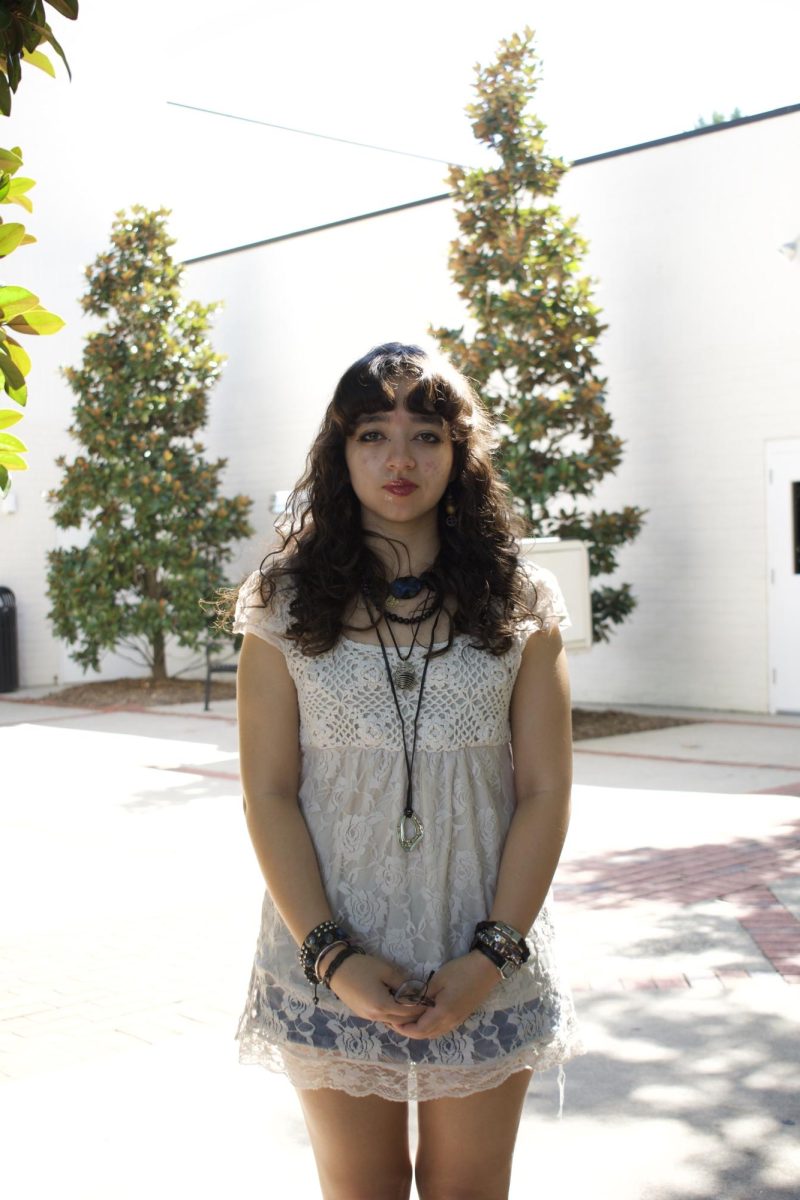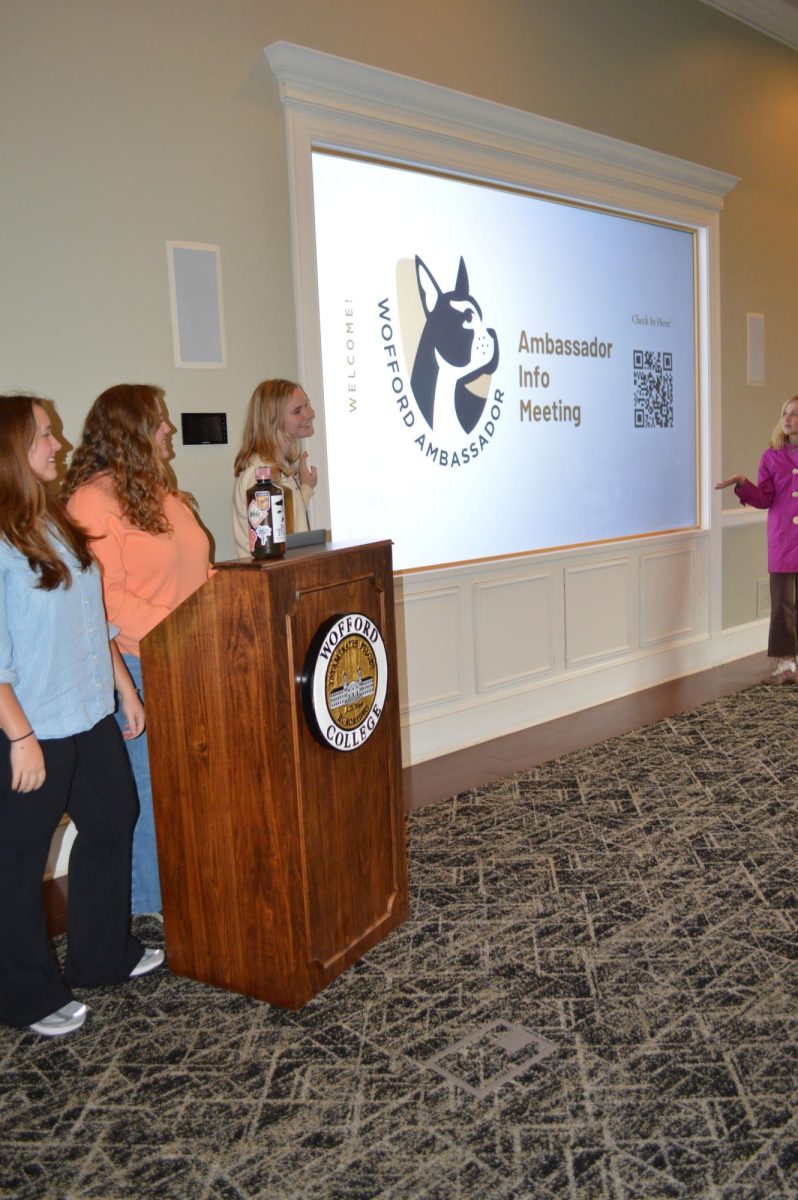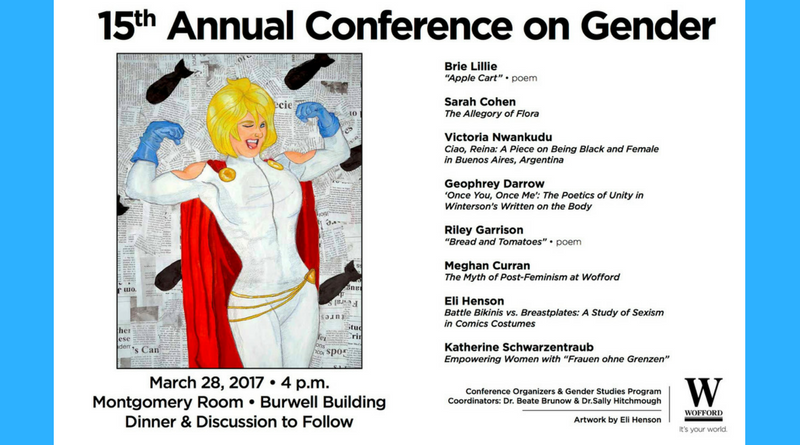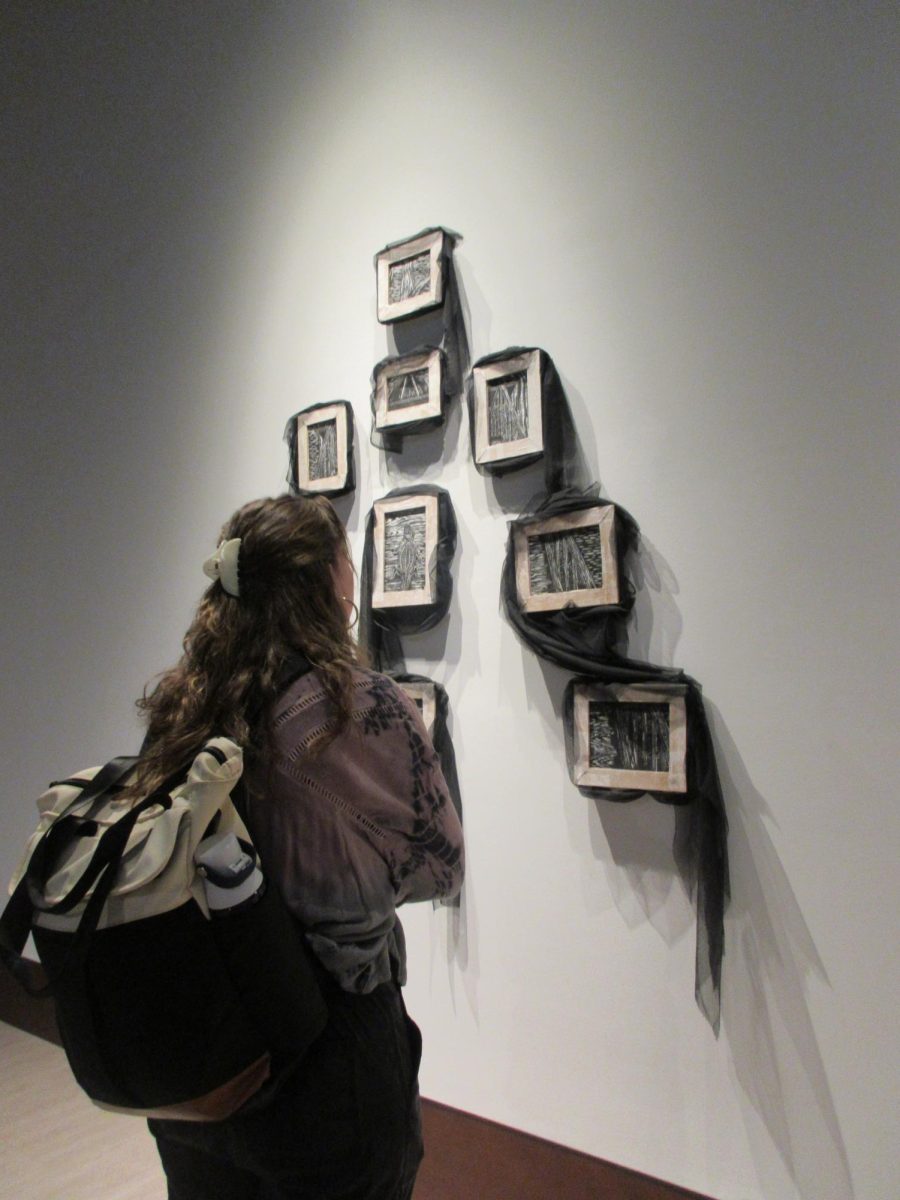By: Sarah Madden, Senior Writer
Fifteen years ago the gender conference became a Terrier tradition born from the gender studies program. The conference includes presentations from six or seven Wofford students and occasionally there are presentations from other schools like Converse College or USC Upstate. This year a student from the College of Charleston will be presenting.
“It’s a great opportunity for students to showcase their research from a variety of disciplines,” says Dr. Beate Brunow, assistant professor of German. “We usually have papers from English, art history, religion… we often try to include creative work as well. Over the past few years we’ve had students exhibit art pieces and talk about their work. We also try to include poetry from the Helmus contest if the winning work has to do with gender, spoken word or any other kind of creative work.”
The conference will run from 4:00-5:30 on March 28 in the Montgomery Room in Burwell and is open to everyone. There will be free pizza and discussion to follow, which Brunow calls a good opportunity for students to “stick around and talk a little more about the information they’ve heard, ask questions and talk about gender.” In the past this has been an enjoyable time.
This year’s lineup includes presentations on being black and female in Argentina, Wofford’s gender equality committee and its relation to gender studies, gender in comic figures, women fighting terrorism and others.
“We have a nice mix between the traditional research paper, creative and also experience-based presentations,” says Brunow. “Everybody is invited to attend and encouraged to stick around for pizza. I think that sometimes the perception is that we don’t need to talk about these issues anymore, but I think once you start hearing more about it, it’s clear that it’s still a relevant topic today.”
The need for such a conference is still relevant to Wofford students, she says:
“It’s clear to us that there’s still a strong interest in students to explore issues of gender and sexuality, and the program allows them to do this in an academic way. It’s as relevant as it’s ever been, especially now that a lot of these topics feel more politicized currently. It’s always at the end of Women’s History Month, so hopefully students have seen a bunch of different events before this one, and it’s kind of an ending point for the month.”






























